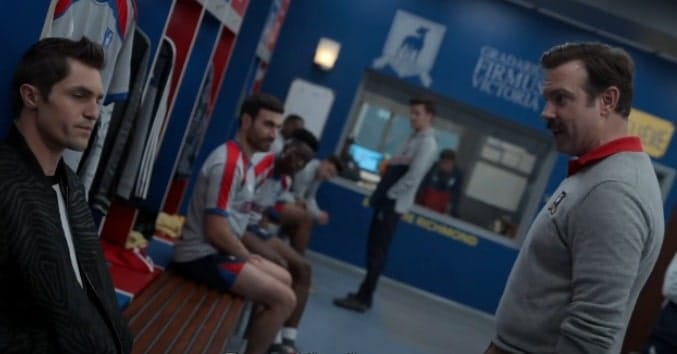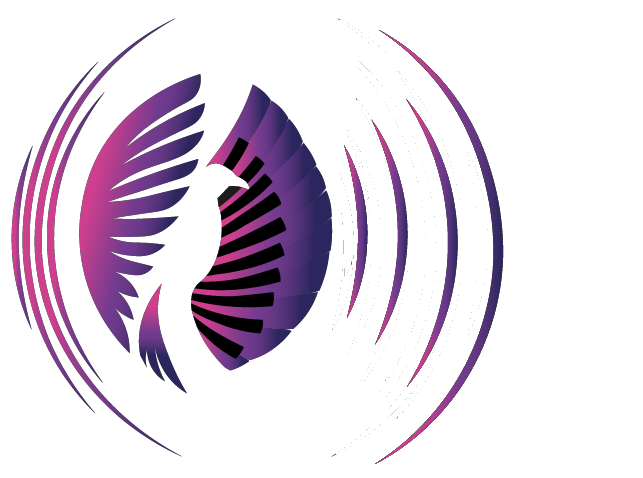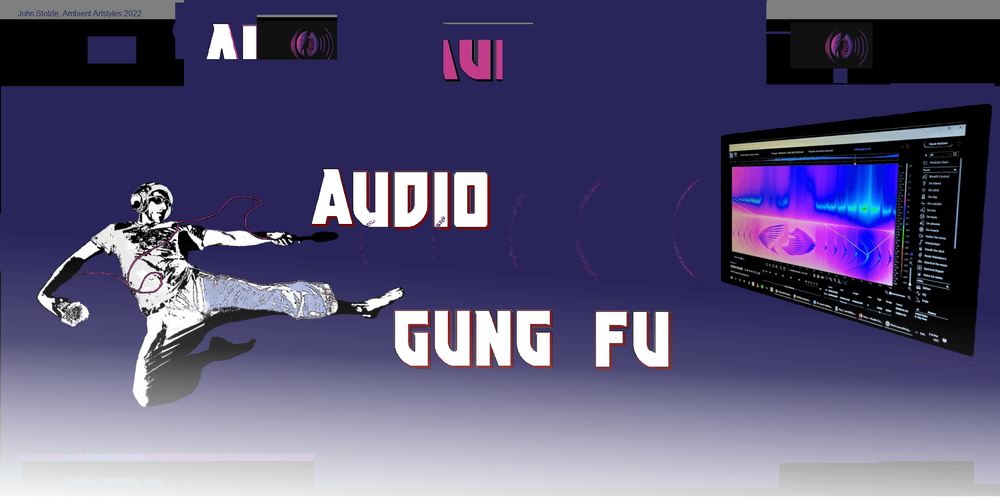Audio Gung Fu
Audio Gung Fu is a blog where scientific understanding and artistic expression come together under an umbrella of synthesizers and sound design.
The foundation of my continued learning, Audio Gung Fu, is outlined below. It is inspired by Bruce Lee’s three stages of cultivation and training which are rooted in the Dao.
Gung Fu (or GongFu 功夫) is a focused practice that teaches one to express oneself through a medium. 功夫 [2], of a combination that represents "labor, hard work, and energy" and "persevere through time in order to achieve success" - From Moy Yee San Jong [3], of the Moy Yat [4] and Ip man 葉問 (Yip Gai-Man) WingChun lineage.
Gung fu is so extraordinary because it is nothing at all special. It is simply the direct expression of one’s feeling, with the minimum of lines and energy. Every movement is of itself without the artificiality with which we tend to complicate them. - Bruce Lee. [1]
Overview
1) The Un-learned, a primitive stage.
When learning a new skill, such as martial arts, dance, playing an instrument, or designing sound, a novice expresses themselves in a sincere but often chaotic and discordant manner. Their technique is raw, erratic, and unrefined. Full of emotion and intent, their work is hollow, tinny, or somehow lacking.
I experienced a period where I would wantonly twist pots on a synth, slide random faders, and haphazardly throw mysterious sounding plugins on fx chains in Ableton and Reaper. While free-flowing exploration is an integral part of the journey, during this phase my understanding of envelopes was merely as something to place letters in. When first learning the saxophone, I had no semblance of embouchure and honked and squeaked with frustrated emotion.
2) The Apprentice, a mechanical stage.
A learner may obtain a scientific understanding of a process or knowledge of sequences and forms but become constrained by technique. While 'intellectually bound', flow between emotion and intent, and expression can be lacking.

We lose some expression when we repeat and memorize rigid forms, yet they give us the foundation to take our craft to a higher level. Practice is integral to the process.
An instrumentalist may strictly follow scales or arpeggios and play mechanically while building the foundation needed for unconstrained improvisation.
Learning is definitely not mere imitation, nor is it the ability to accumulate and regurgitate fixed knowledge. Learning is a constant process of discovery — a process without end.
- Bruce Lee
I technically understood how ADSR envelopes functioned and I could utilize them in basic patches but I lacked understanding for how I could creatively implement them. I was unable to 'feel it'. While my use of envelopes was constrained, my appreciation for the skill of audio masters grew considerably.
3) Mastery, a spontaneous stage of ‘artlessness’.
Fluency and personalized style. When tapped into the moment, a master may not directly think about forms or patterns. They have learned techniques, 'unlearned' or chiseled away at non-essentials, let go, and are left unconstrained in state of fluidity. Their knowledge flows into unrestrained and authentic expression.
This is the formless form which Bruce Lee would reference. As in the first stage, expression is sincere and personal unique styles emerge from a foundation of deep learning and mindful practice.
The process of learning and then un-learning continues as we make the knowledge of a thing our own and incorporate it into our fluid expression.
Humans, the living creation, the creating individual, is always more important than any established style. - Bruce Lee
4) Continued learning and unlearning.
Audio Gung Fu is a personal, iterative, and non-linear process. It expands beyond specific disciplines such as audio synthesis, recording, musicianship, or engineering. The cycle of learning and interwoven flow between stages 1-3 continues as I branch outward. In my blog, I document some of the branches from my studies.
Gung-Fu is not preoccupied with breaking bricks and smashing boards [...] We are more concerned with having it affect our whole way of thinking and behaving. - Bruce Lee
Gung-Fu is rooted in a philosophy for moving through the world with a goal of returning to a state where life flows together into a harmonious whole. It is more than a process to hone or acquire skills. It is more about building oneself on a deeper level. At the bottom of this page are links to further reading if this resonates with you [1b] [5] [6].
During 2020, I went through a Kung-Fu phase while participating in a philosophy reading group that focused on Eastern thinkers. For a period, we read a composite of Bruce Lee's ideas [1], and among many things, I learned that Lee held a philosophy degree in addition to being a Gung Fu master. Since then, I have found my learning about Daosim and Gung Fu to be rewarding in numerous ways.
I am excited to share my audio explorations with the community. I figure, what better way to kick things off than to lay some zen foundations with this post!
🎬Movie Recommendation!
'Return to the 36th Chamber' is among my absolute favorite lesser-known Kung Fu movies. Definitely watch it if you get the chance. It’s a real treat! 🥋✌️🎋
[1] Little, J. R., "The warrior within: the philosophies of Bruce Lee to better understand the world around you and achieve a rewarding life", (1996) Chicago, Contemporary Books.
[1b.] Little, J.R., Forward by Linda Lee Cadwell. "The warrior within: the philosophies of Bruce Lee to better understand the world around you and achieve a rewarding life" (1996) Chicago, Contemporary Books. Library of Congress Record. https://lccn.loc.gov/96014438
[2] Moy Yee Kung Fu School. "Meaning of Kung Fu 功夫." Moy Yee San Jong, May 12, 2021. https://www.moyyee.com/post/meaning-of-kung-fu-%E5%8A%9F%E5%A4%AB.
[3] Moy Yee Kung Fu School, "Our Lineage," Moy Yee San Jong, accessed, 2025, https://www.moyyee.com/lineage.
[4] "Moy Yat," Ewing Chun, accessed, 2025, https://ewingchun.com/sifus/moy-yat.
[5] Hansen, Chad, "Daoism", The Stanford Encyclopedia of Philosophy (Spring 2020 Edition), Edward N. Zalta (ed.) https://plato.stanford.edu/archives/spr2020/entries/daoism/.
[6] Ibid. Hansen, Chad, "Important Daoist Concepts".

